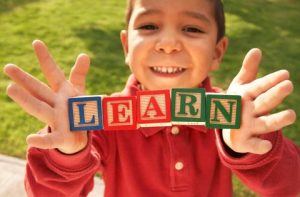Featured Reading on Underserved Gifted Students
It’s very easy to fall into the trap of thinking that the way gifted identification or instruction happens in your student’s classroom is how it happens everywhere — even within the same building. The truth is that many high-ability and high-potential students are chronically underserved, especially when it comes to factors like race, language, gender, or twice exceptionality (2E).
Because the federal government does not provide guidance or have requirements for gifted services, students encounter a range of services from state to state and even district to district. – NAGC
Equitable Access to Gifted Education for Underserved Learners
 NAGC estimates the total population of GT learners at 3 million in this country alone. Identifying who should receive gifted services remains a matter of debate, even among people who study these learners.
NAGC estimates the total population of GT learners at 3 million in this country alone. Identifying who should receive gifted services remains a matter of debate, even among people who study these learners.
There has long been concern that high-ability students from underserved populations — those who are limited English proficient, disabled, or from minority or low-income backgrounds — are persistently underrepresented in advanced classes and in programs for students identified as gifted. – NAGC
Funding constraints and widely varied identification practices are two of several factors that influence equitable access to gifted services. Just 32 states mandate gifted education and only four fully fund gifted programs (NAGC State of the States Report in Gifted Education, 2014-2015).
Socio-economic status and language barriers also have an impact to access. Few districts require that ELL students be tested. Administering tests in English only or using single data points for gifted identification is problematic.
- Getting to Excellence with Equity: Ron Ferguson Talks About Opportunity, Achievement, and Raising the Bar for All Students by Bari Walsh, via Usable Knowledge from the Harvard Graduate School of Education 26 January 2015
- The Achievement Gap Initiative at Harvard University
- Equalize Educational Opportunity by Harold O. Levy, Executive Director of the Jack Kent Cooke Foundation, 26 April 2016
- Identifying Gifted and Talented Students with Equity Proves Difficult by Erin McIntyre, via Education Dive 10 February 2016
- Fostering Equitable Access to Gifted Services for English Learners Through a Balance of Measures and Program Options by Susan Dulong Langley via the NAGC Blog 10 February 2016
- Gifted, But Still Learning English, Many Bright Students Still Get Overlooked, via NPR IdeaStream 2016
- These Kids Were Geniuses — They Were Just too Poor for Anyone to Discover Them by Jeff Guo, The Washington Post 22 September 2015
- Can Universal Screening Increase the Representation of Low Income and Minority Students in Gifted Education? by David Card and Laura Giuliano, Working Paper 21519 for the National Bureau of Economic Research, made available by David Card (.pdf)
Accounting for Implicit Bias
Bias is a personal and sensitive subject. It can be challenging for people to recognize bias in themselves, let alone recognize how it might impact interactions with or attitudes toward other people. Even so, it’s essential to address bias when it comes to identifying students who should receive gifted services.
Universal screening—assessments given to all students to determine if one is advanced or needs extra help—is possibly the best option for closing the racial gap in gifted programs, [Jason A.] Grissom [associate professor of public policy and education at Vanderbilt University] says. “It takes out adult discretion, and ensures that all kids get a more systematic opportunity to be evaluated,” he says. – District Administration April 2016
 Project Implicit, founded in 1998, is a non-profit organization and international collaboration between university researchers who are interested in implicit social cognition. They explore the gap between intentions and actions.
Project Implicit, founded in 1998, is a non-profit organization and international collaboration between university researchers who are interested in implicit social cognition. They explore the gap between intentions and actions.
Project Implicit conducts a series of online implicit association tests (IAT), each designed to detect and measure thoughts and feelings outside of people’s conscious awareness and control. You can take these tests online at no cost; results contribute to ongoing research. IAT topics include race, gender and science, gender and career, Native American populations, and several others.
- General IAT information and Project Implicit FAQs
- Racial bias in gifted and talented placement and what to do about it by Ronald F. Ferguson, PhD., an excerpt from Aiming Higher Together: Strategizing Better Educational Outcomes for Boys and Young Men of Color, via NAGC 13 May 2016
- Race Biases Teachers’ Expectations for Students, Johns Hopkins University Press Release 30 Mar 2016, concerning research findings published in Who Believes in Me? The Effect of Student–Teacher Demographic Match on Teacher Expectations by Seth Gershensona, Stephen B. Holta, Nicholas W. Papageorgec, published in Economics of Education Review 11 Mar 2016
Additional Reading on Underserved Gifted Learners
- NAGC Position Statement on Identifying and Serving Culturally and Linguistically Diverse Students (.pdf)
- NAGC Position Statement on Giftedness Among Underserved and Disadvantaged Populations (.pdf)
- Even more at our Under Served GT Populations page and the rest of our Parent / Educator Resources


